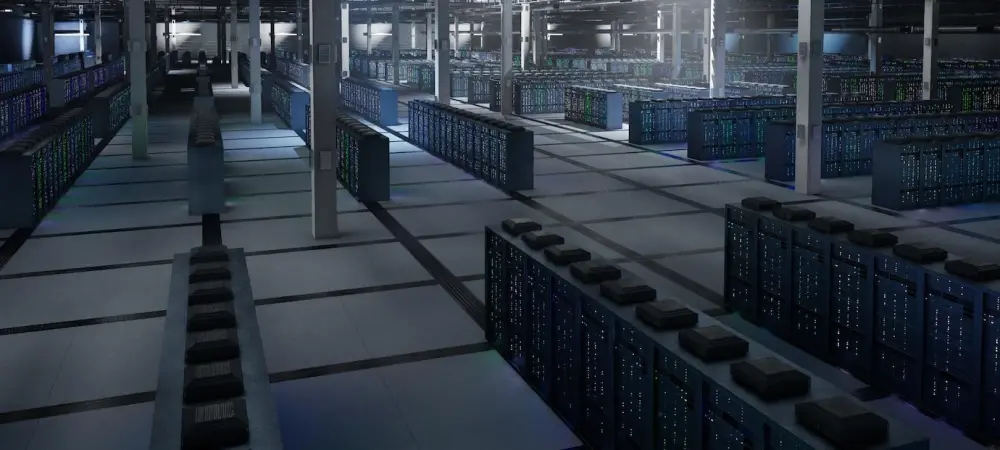Jet.AI Inc., initially renowned for its contributions to aviation software and services, now strengthens its foothold by pivoting toward data center development in Canada. This strategic shift signifies a broader industry evolution toward energy-efficient and scalable infrastructures tailored for AI solutions. Located near North America’s most extensive natural gas pipeline, Midwestern Canada offers Jet.AI a unique opportunity to develop a hyperscale data center campus powered by natural gas. This project reflects Jet.AI’s intention to embrace next-generation AI workloads, ensuring efficient cooling via the region’s frigid air and leveraging underutilized energy resources. Set to reach a substantial initial capacity of 100MW, the facility anticipates expansion to 500MW, underscoring the company’s vision for creating an “AI factory” adept at managing cutting-edge workloads.
Harnessing Strategic Partnerships for Expansion
Consensus Core’s Equity and Development Vision
A crucial element of Jet.AI’s venture involves collaboration with Consensus Core Technologies, with whom they share joint ambitions of expanding AI data center capabilities. Consensus Core bolsters this project by contributing full equity stakes in the Midwestern and Maritime data center projects. The unique blend of expertise from both companies allows for the establishment of a framework conducive to advanced AI processing abilities. Commitment toward infrastructure is evident as Jet.AI plans an investment of up to $20 million in this endeavor. The company aims to gradually increase its stake within the joint holding entity, moving from an initial eight percent to nearly 20 percent, thereby further cementing its influence on the project’s direction. This strategic alliance is set to significantly accelerate the development of both national and international data processing facilities.
Land and Resource Optimization for Sustainable Growth
Jet.AI is making strides in optimizing land and energy resources to reinforce the project’s sustainability. The company’s proactive approach involves expanding the Midwestern site, potentially acquiring additional land to accommodate growth ambitions. Alongside land acquisition, Jet.AI explores the feasibility of incorporating a wind farm to complement the data center’s power needs, ensuring enhanced reliability with renewable energy sources. Such initiatives highlight Jet.AI’s resolve to foster an eco-friendly environment while advancing technological capabilities. These contributions to infrastructural resilience mirror the larger industry trends prioritizing sustainability and efficient resource utilization. By leveraging both local natural resources and strategically positioned energy supplies, Jet.AI endeavors to establish data centers that echo its commitment to responsible innovation.
Anticipated Growth and Industry Trends
Maritime Project’s Immediate Capacity and Long-Term Goals
Beyond Midwestern Canada, Jet.AI’s endeavors extend to its Maritime project, poised to provide immediate data processing capacity of 40MW. The ambitious long-term goal targets an eventual expansion to 1GW, showcasing a resolute commitment to scaling operational capabilities. This project represents a crucial component of Jet.AI’s broader strategy, facilitating its drive to address increasing market demand for efficient large-scale data processing. Proximity to key natural resources in both regions significantly amplifies the attractiveness and feasibility of these projects. It illustrates the impact of geographic advantages, which are paramount for achieving scale in AI data processing.
Aligning with Market Demands for Energy-Efficient Infrastructure
The refocus toward AI data centers indicates Jet.AI’s clear alignment with evolving technological and market demands, which now prioritize energy-efficient and advanced processing capabilities. This strategic pivot not only underscores Jet.AI’s adaptability but also prompts a wider reflection across the industry about optimizing operational efficiency amid growing energy consumption concerns. The trend toward sustainable AI deployment presents challenges and opportunities for stakeholders across the technology spectrum. Capacities available through initiatives at Midwestern and Maritime sites highlight Jet.AI’s proactive stance toward ensuring that infrastructure advancements dovetail with ecological considerations. Such forward-thinking approaches resonate well across sectors striving for symbiotic relationships between progress and conservation.
On the Horizon: Future Steps and Considerations
Jet.AI is making strides not just in Midwestern Canada but also with its Maritime project, which is set to offer an immediate data processing capacity of 40MW. The long-term ambition aims for an expansion reaching up to 1GW, underscoring a strong commitment to enhancing operational capabilities. This venture plays a key role in Jet.AI’s overarching strategy to meet the rising market demand for efficient, large-scale data processing solutions. The strategic proximity to crucial natural resources in both regions notably increases the appeal and practicality of these projects. It vividly demonstrates how geographic advantages are essential for achieving scale in AI data processing. Furthermore, the company’s vision aligns with a robust framework to evolve with technological advancements, leveraging these geographic and resource benefits to optimize data processing. Through such initiatives, Jet.AI aims to secure a leading position in the rapidly growing data processing industry, ensuring sustainability and efficiency.

